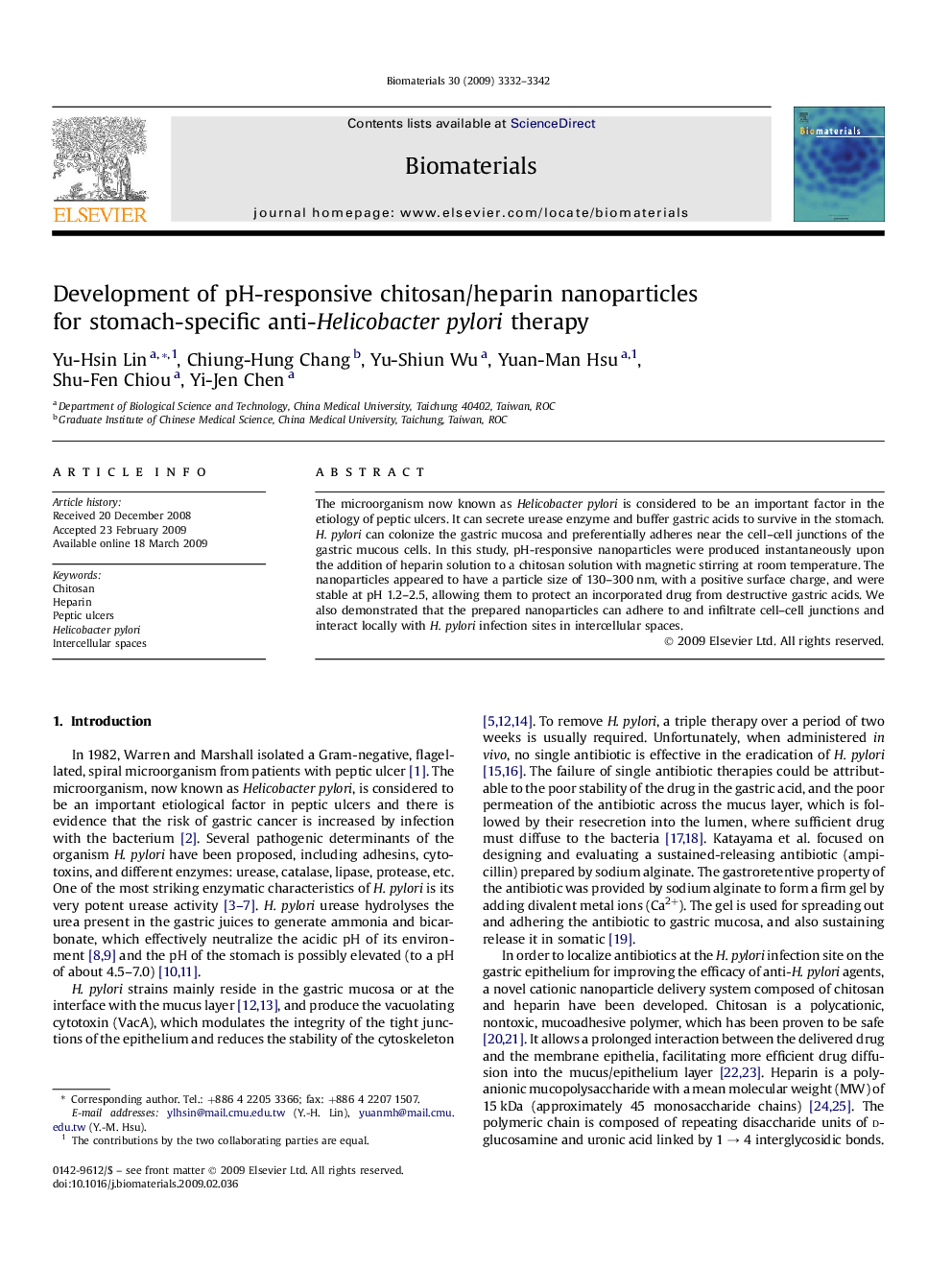| Article ID | Journal | Published Year | Pages | File Type |
|---|---|---|---|---|
| 10013 | Biomaterials | 2009 | 11 Pages |
The microorganism now known as Helicobacter pylori is considered to be an important factor in the etiology of peptic ulcers. It can secrete urease enzyme and buffer gastric acids to survive in the stomach. H. pylori can colonize the gastric mucosa and preferentially adheres near the cell–cell junctions of the gastric mucous cells. In this study, pH-responsive nanoparticles were produced instantaneously upon the addition of heparin solution to a chitosan solution with magnetic stirring at room temperature. The nanoparticles appeared to have a particle size of 130–300 nm, with a positive surface charge, and were stable at pH 1.2–2.5, allowing them to protect an incorporated drug from destructive gastric acids. We also demonstrated that the prepared nanoparticles can adhere to and infiltrate cell–cell junctions and interact locally with H. pylori infection sites in intercellular spaces.
